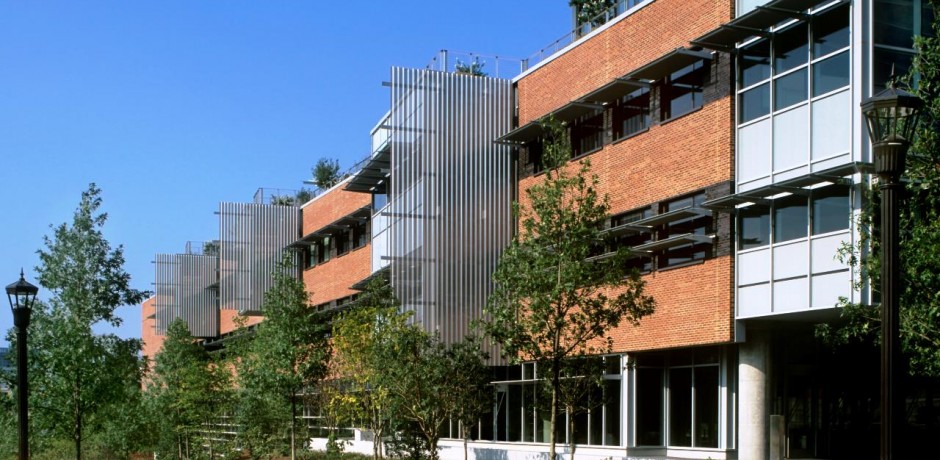Beyond LEED
LEED Certification is a great first step; however, to make our environments truly sustainable, we must develop operable and maintainable solutions that build lasting value and inspire occupants to go beyond normal conventions.
Speaking to the Georgia Tech Alumni magazine, Howard Wertheimer, Georgia Tech’s Director of Capital Planning and Space Management said “When we built Clough Commons, we were very fortunate to hit the marketplace at the right time, as a result, we were able to get tremendous value for our dollar and were able to include Tech Green, which helps define the center of campus.” The G. Wayne Clough Undergraduate Learning Commons (Clough Commons) is a LEED Platinum academic building on the campus of the Georgia Institute of Technology.
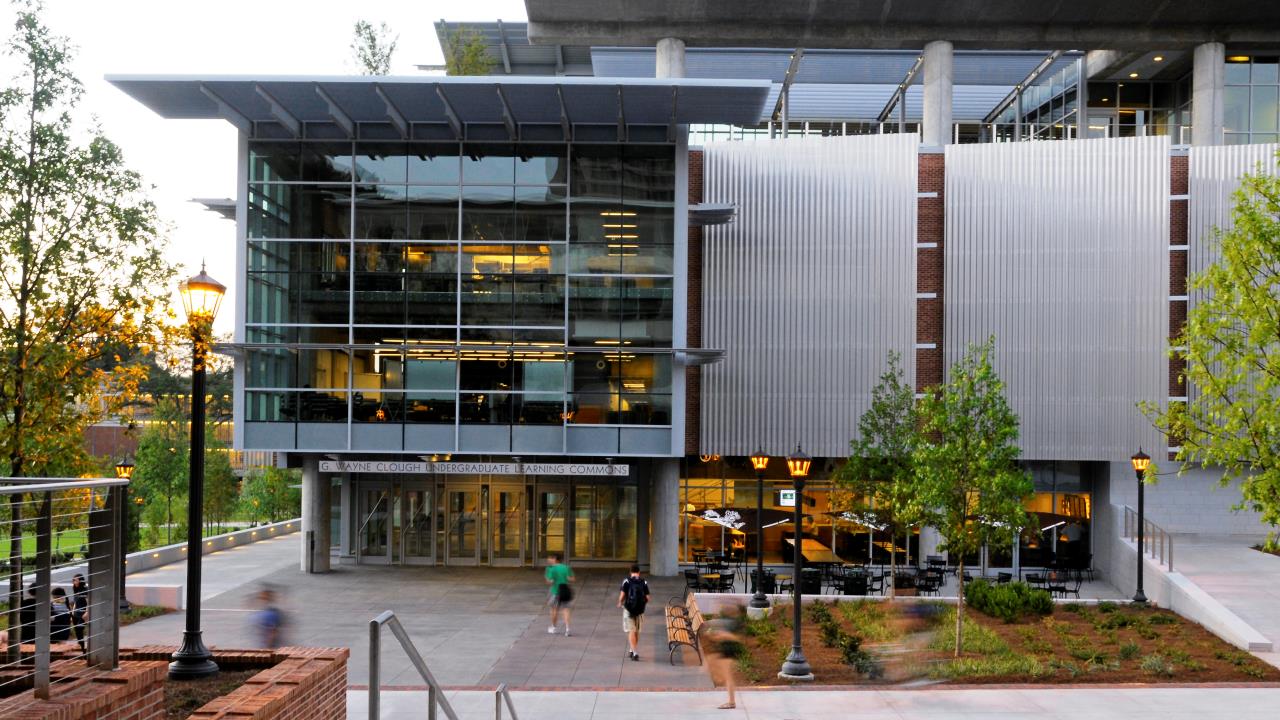
Similarly, the success of the sustainability measures incorporated into the Emory Few and Evans Residence Halls helped Emory University take the sustainability initiatives beyond the LEED Gold certification. According to the research analysis paper, Learning to Live Green: The Evans Hall Community, Emory University’s Few and Evans Halls now feature a Living Green Program which provides academic advising on sustainability, promotes skills related to green living, but most importantly, offers an opportunity to live as a community with shared purpose and experience. Students interested in living in Evans Halls are required to complete a lengthy and detailed application, which assesses the student’s commitment to living in a green community. An informal survey of incoming Evans Hall freshmen revealed that slightly more than half of the students living in the dorm applied there for the purpose of being part of a green community.
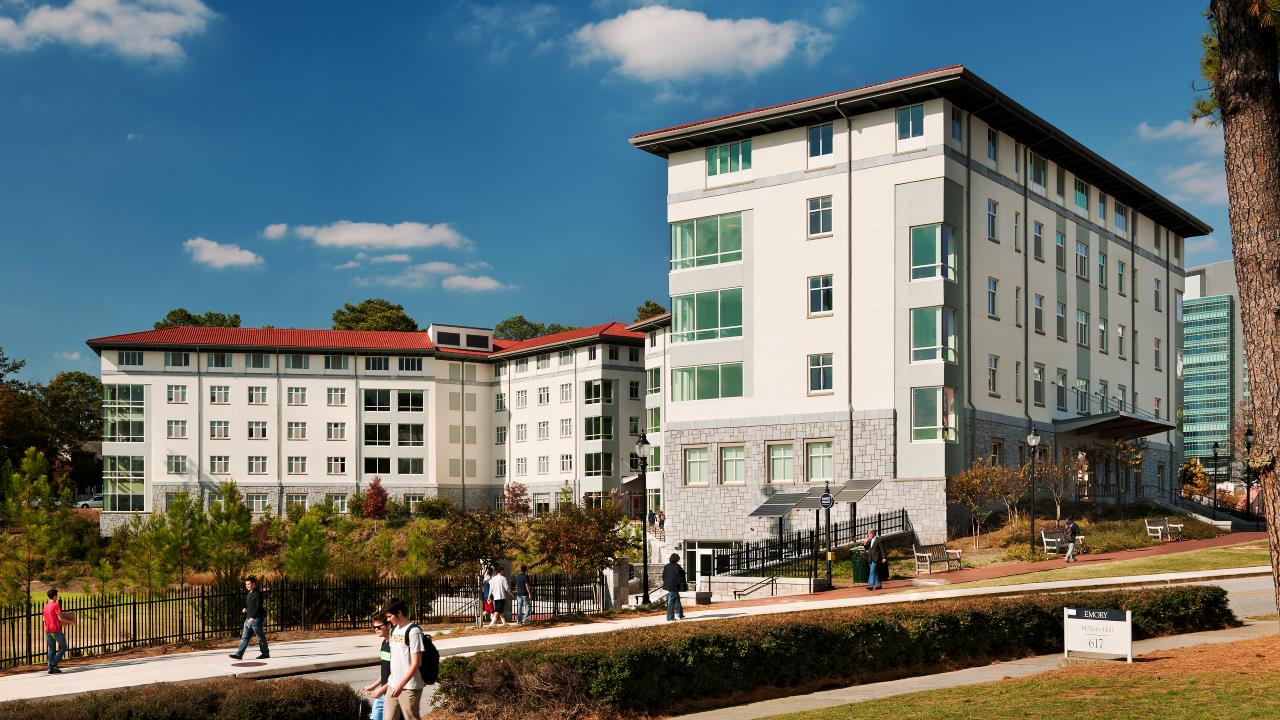
Ciannat Howett, Emory’s Director of Sustainability relayed that each campus Residence Hall has an electronic display panel in the lobby that allows residents to compare the energy and water consumption for their building with other residence halls. Throughout the year, the students compete with other dorms and floors to see which has the lowest rate of consumption. An online component of the energy monitors also enables Emory community members to pledge to take steps like washing clothes in cold water or waiting to do laundry until a full load has accumulated. In one year, the students saved enough energy to power an additional dormitory. Emory’s Evans Hall Community has been a great example of harnessing the potential of sustainable initiatives to go above and beyond and become entrenched in the fabric of the institution’s practices.
Building Dashboard
Water Consumption
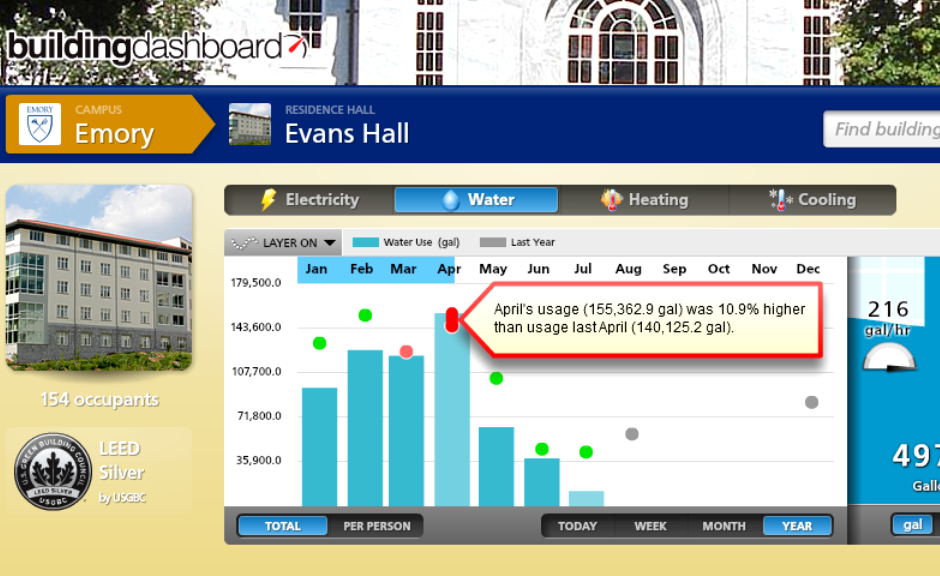
Electricity Consumption
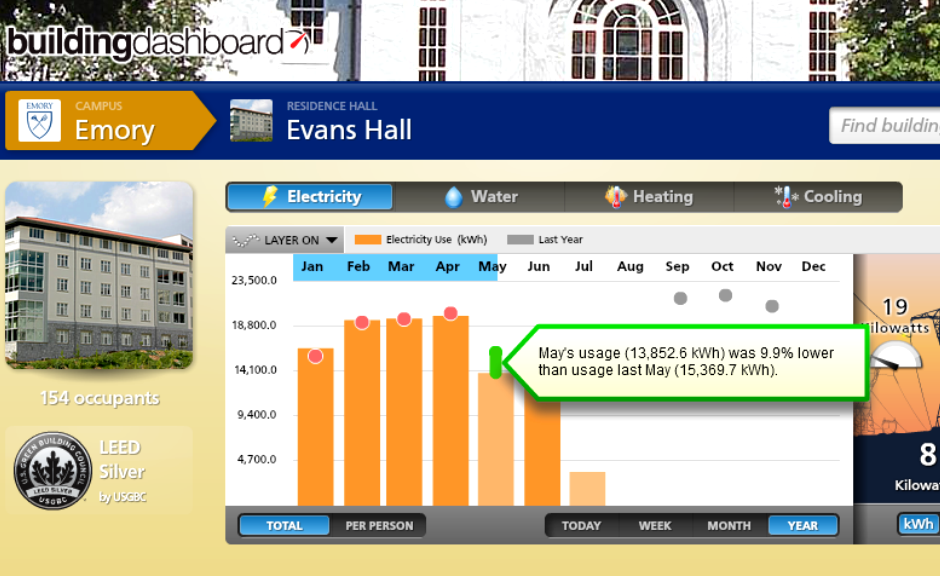
Building Comparisons
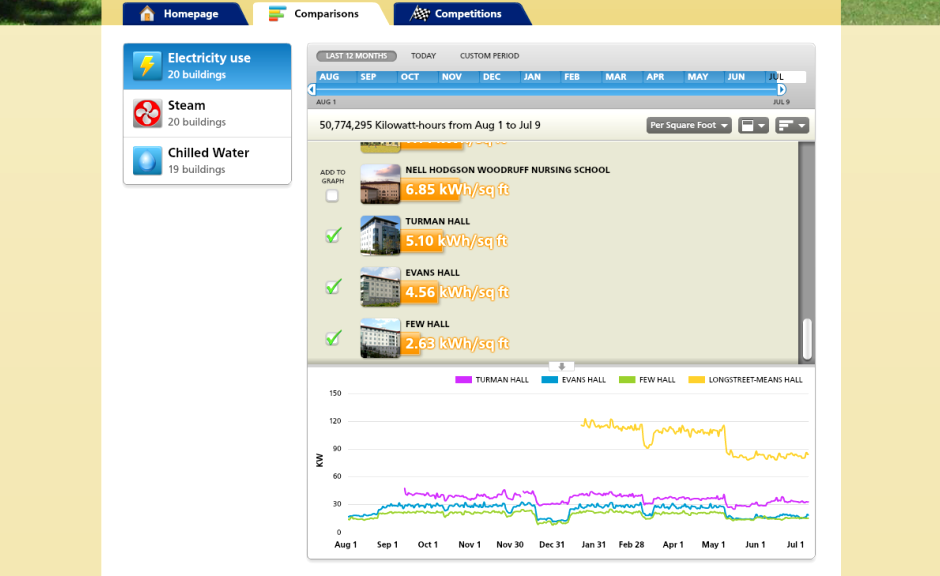
More information on the sustainable features of Clough Commons building can be found here.

